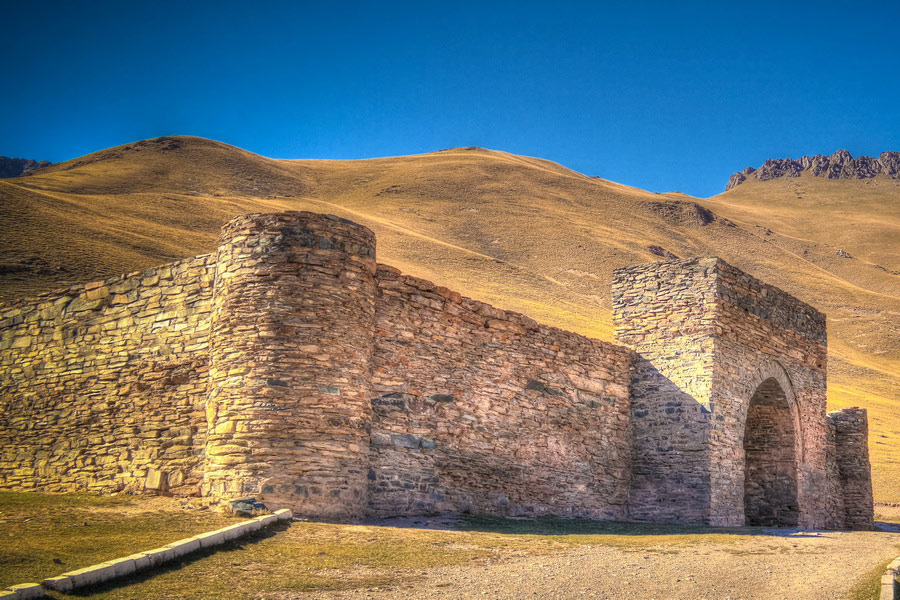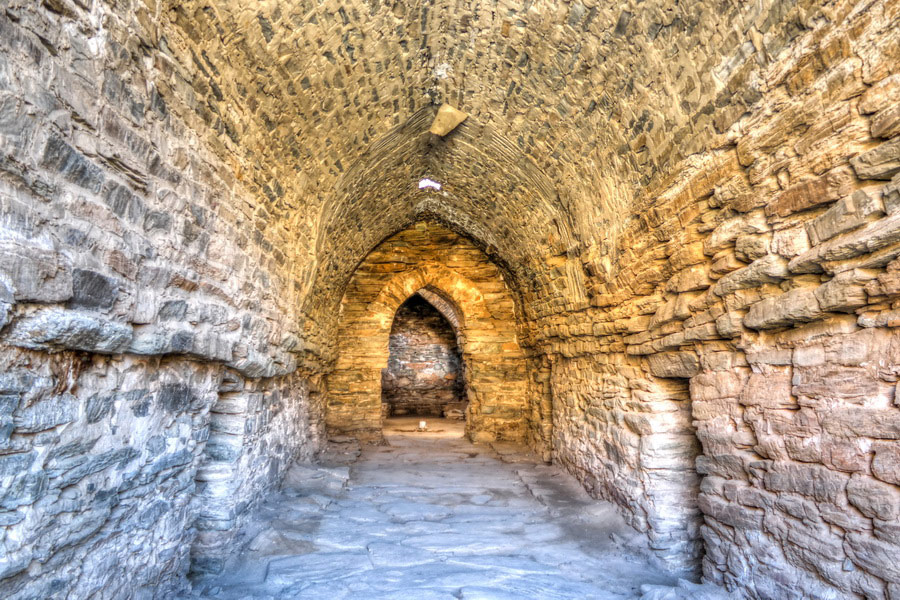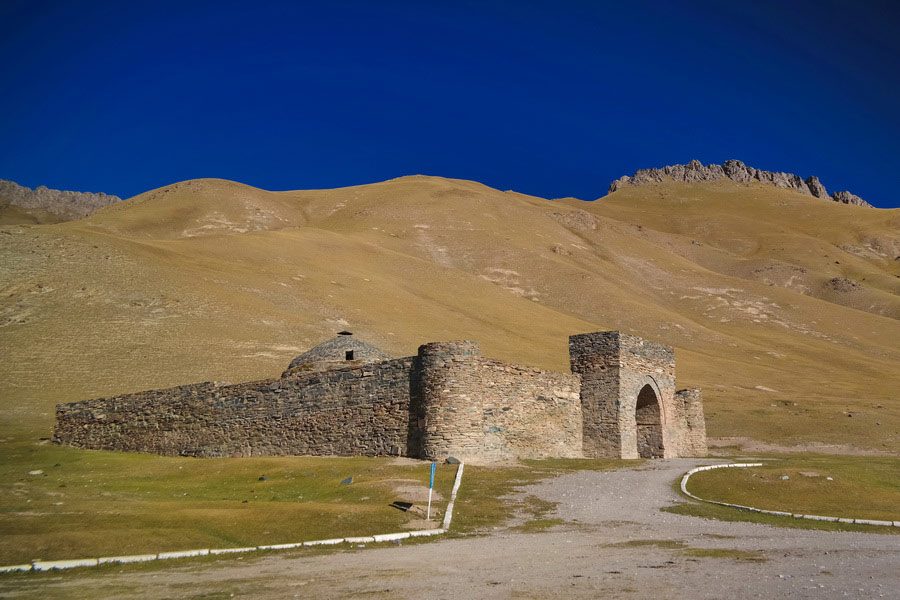Tash-Rabat complex, Kyrgyzstan

Kyrgyzstan cities. History and pictures of all interesting Kyrgyzstan cities
Tash-Rabat was constructed in the 15th century, on the ancient trade route from Central Asia to China, and was a resting place for merchants, ambassadors, travelers and other wanderers. It is the largest structure built of stone from Central Asian architecture of that epoch. It is notable not only for it's size and building materials, but also for its special layout, based on perfect symmetry. Lost among the primeval wilderness, far from inhabited locations, the caravanserai looks unbleached, monumental and unassailable.
About 520km from Bishkek, 125km (1.5 hours) from Naryn, 17km from the end of the paved road (just past the emergency airstrip) 90km (1.5 hours) short of the Chinese border at Torugart, and at an altitude of approximately 3,500m above sea level sits the ancient caravanserai of Tash Rabat. According to one author, this is probably the best preserved Silk Road site you will find and "no other retains as much of it's original atmosphere".
This is a carefully restored stone building that once housed an inn on the Great Silk Road. Its date of origin is a complete mystery; however, there is archaeological evidence to suggest that the site was occupied in the 10th century. Set some 15km up a small, beautiful valley in the foothills of the Tian Shan, the whole structure is embedded in a hillside. There is evidence that it was a place of both rest and worship and would have served to protect caravans traveling to and from China from both the ravages of the weather and of bandits; even before the time of both Tamerlane or Genghis Khan.

The Russian explorer Valikhanov provided the first description of Tash Rabat to reach the West in 1859. One early report suggests that it was linked to the frontier of the ancient settlement of Osh; another that it was built over 500 years ago for "charitable purposes; a third compares it to a cloister; a fourth to a mosque, and yet another links it to the conquest of the Ferghana valley by Ulugbek, who used it as a temporary garrison for some of his troops. Renovations were carried out in the 1980's - but are so unobtrusive that it is hard to detect the work.
A centrally domed space is surrounded by some 30 or 31 (no-one seems to know exactly - the reason seems to be that some of the walls are no longer standing) smaller domed rooms, including a kitchen. Across the large open central space from the entrance is the "Khan's seat". Behind this to the right is a small room where there are two holes in the ground (one 10m deep,the other filled in over time) - dungeons in which prisoners would be incarcerated. It is possible to wander through the warren of small rooms which would have housed the guests. There are stories of a tunnel leading under the hillside for some 100 meters from the building to a lookout post on the other side of the hill.
Maybe one of the reasons it has retained its character is that it is set on the main road from Bishkek/Naryn to Torugart, but some 15km up a side valley. For many years, the turn-off was not signed, and travelers simply passed by, unaware of what they were missing. Leaving the asphalt road, vehicles have to take a gravel road along the valley of the Tash Rabat River. The slopes are covered with a tussocky type of grass that gives the impression of corduroy and herds of horses and yaks, flocks of sheep and goats; even the occasional camel grazes in the area.
It is possible to camp in the valley and there are yurts set up in the immediate neighborhood. The main road to Torugart trails around the end of the At-Bashi Mountain range via the Ak-Beyit pass, but there is a track over the hills via Tash-Rabat pass (3,968m) to Lake Chartyr Kul (just 8km away) and views of the Chinese border. The trek takes about 4 hours (one way). Horse riding can also be arranged.

